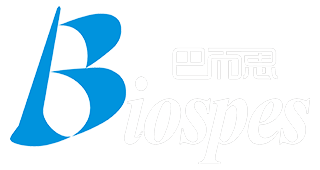Monoclonal Anti- Epithelial cell adhesion molecule, EP-CAM antibody
Size: 100 μg
Host: Mouse
Reactivity: Human, mouse
Isotype: IgG
Application: WB, IHC-P, ICC, Flow-Cyt
--------------------------------------------------------------------------------------------------------------
Price: $180.00
Catalog# BMA1019
Lot # Check on the product label
Size 100 μg
Isotype IgM
Clone # 3-E1-E2
Host Mouse
Reactivity Human, mouse
Product Form Liquid
Purification Protein L purified
Immunogen
Recombinant EP-CAM protein.
Recommend Application
Western Blot, WB (1:500-1:1,000)
Immunohistochemistry,IHC-P(1:100-1:200)
Immunocytochemistry, ICC (1:50-1:100)
Flow Cytometry, Flow-Cyt (1:50-1:100)
Other applications have not been tested.
The optimal dilutions should be determined by end user.
Storage Buffer
1*PBS (pH7.4), 0.2% BSA, 40% Glycerol and 0.05% Sodium Azide.
Storage Instruction
Store at 4°C after thawing (1 week). Aliquot and store at -20°C for long term (at least one year).
Avoid repeated freeze and thaw cycles.
Background
Epithelial cell adhesion molecule (Ep-CAM) is a pan-epithelial differentiation antigen. It is intricately linked with the Cadherin-Catenin pathway and hence the fundamental WNT pathway responsible for intracellular signalling and polarity. It has been used as an immunotherapeutic target in the treatment of gastrointestinal, urological and other carcinomas. It is expressed in undifferentiated pluripotent stem cells. and it is being used as a target for immunotherapy treatment of human carcinomas.
Reference
1. Calabrese G, Crescenzi C, Morizio E, Palka G, Guerra E, Alberti S (Apr 2001). "Assignment of TACSTD1 (alias TROP1, M4S1) to human chromosome 2p21 and refinement of mapping of TACSTD2 (alias TROP2, M1S1) to human chromosome 1p32 by in situ hybridization". Cytogenet Cell Genet 92 (1-2): 164–5.
2. Chaudry MA, Sales K, Ruf P, Lindhofer H, Winslet MC (April 2007). "EpCAM an immunotherapeutic target for gastrointestinal malignancy: current experience and future challenges". Br. J. Cancer 96 (7): 1013–9.
3. Sundberg, M; Jansson, L; Ketolainen, J; Pihlajamäki, H; Suuronen, R; Skottman, H; Inzunza, J; Hovatta, O et al. (2009). "CD marker expression profiles of human embryonic stem cells and their neural derivatives, determined using flow-cytometric analysis, reveal a novel CD marker for exclusion of pluripotent stem cells.". Stem cell research 2 (2): 113–24.



